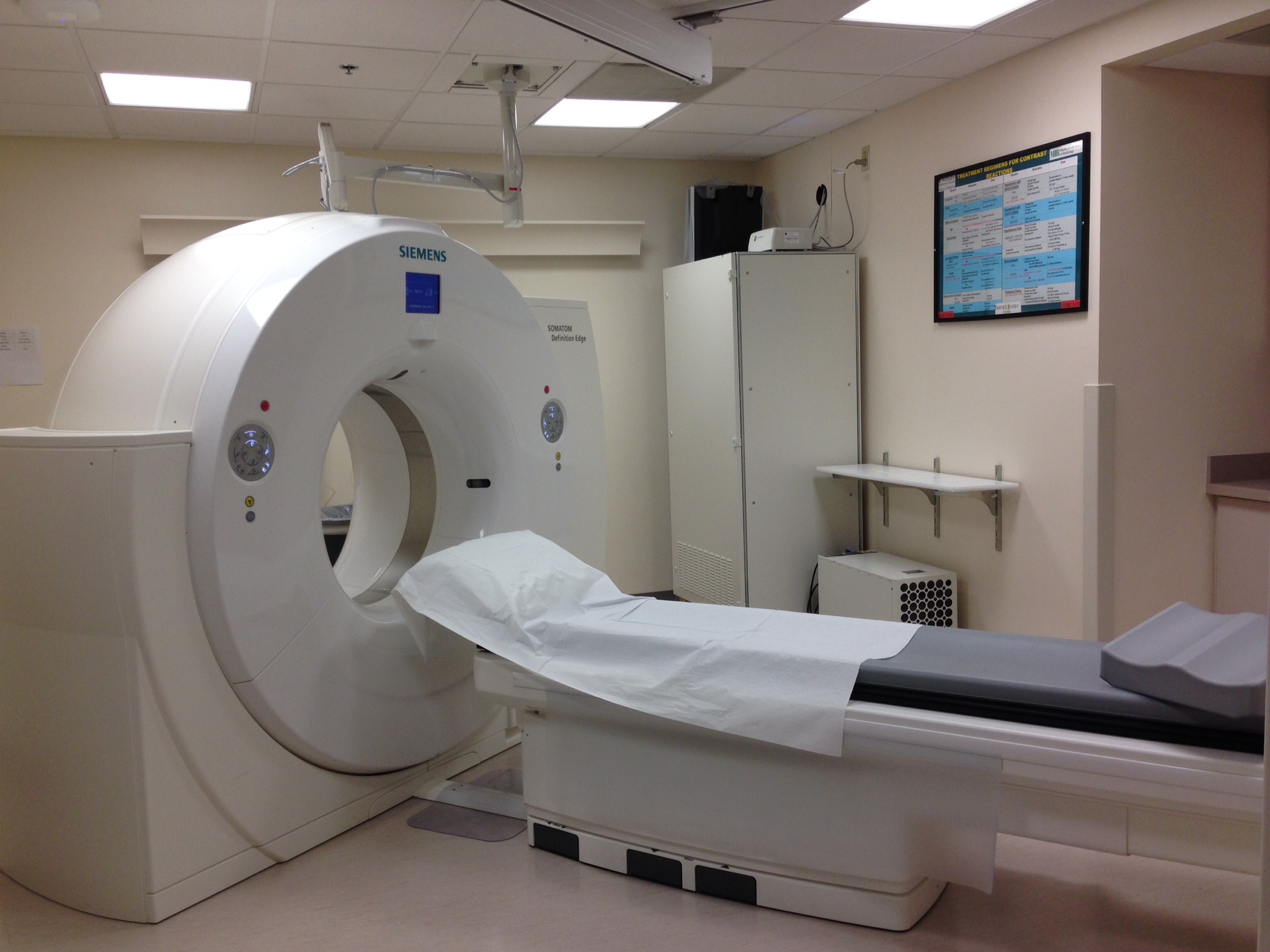If you are going/will go through chemotherapy/radiation treatments, chances are that you have had or will soon have a CT scan. I calculated the other day, that with my clinical trial requirements plus all of the staging scans that were done, I will have had about 12 scans (CT and PET depending on when it was) by the time I’m all finished! I just had a round of scans last week and they turned out clean 🙂 I am almost 3 years now past my last chemo treatment. I have learned some tricks along the way so I’ll highlight those throughout my CT scan story 🙂
Since my husband, Brett, and I come to the hospital from out of town, he and I always drive down to St. Louis the night before and then take the first CT scan appointment of the day. This means a 6:15 am departure from my childhood home…or 6:20 am if we are leaving late 😉 It is important to us to be on time. This can definitely reduce some of the stress involved with heading to the hospital for a scan to look for cancer…an event that is kind of emotionally heavy regardless of the outcome.

When we drive to the hospital, we park in the garage that is adjacent to the building where my CT scans, labs (when they draw blood to check things), and my doctor’s appointment all are. We always bring a bottle of water with us…my husband and I tend to do this anyway, but it is really important to rehydrate after the scan so I like having a bottle of water on hand.


In all of these pictures, Brett and I both look a little tired. 🙂 We aren’t used to getting up before 6 am and we had just returned from an all night drive home from Boston the day before heading down to St. Louis 🙂 Busy couple of days!

When we get to the CT waiting room, the women there know me by name. They always exclaim “Good morning Ms. Casperson!” as we walk in 🙂 I always fill out the same forms…I did this even when I was getting scanned ever 3 months and when I was receiving chemo every 2 weeks…I could complain about that and other hospital idiosyncrasies for hours 😉


Then they call me into the back where they start an IV. When I was still doing chemo, this process was a lot easier because I had a port they could easily access in my chest. It meant that they didn’t have to find a good vein in my dehydrated body’s arm (I have to fast starting at midnight the day before the scan) but used the port that was connected straight to an artery in my neck. I used to always be given a special liquid to drink at this stage too. It tasted super funny and my GI system didn’t like it all that much… Now though, I don’t have to drink it! Win win!


After the IV is placed, I’m sent back to where the CT rooms are and I typically wait a few more minutes. (there is a lot of waiting)


This is what the CT machines look like. When I walk into the room they always verify who I am by making me say my full name and birthday. They also always ask me if I have had a CT scan before…I have to keep from laughing with this question…uhhh yes, I’ve had a ton. I’m basically a pro 🙂
I lay down on the table and it raises and retracts into the doughnut shaped part of the machine. They scan my neck, chest, abdomen, and pelvic area. While you are allowed to have some metal on you (unlike an MRI), I can’t have it in areas where I am directly scanned. I have learned to dress appropriately so that I don’t have to change into some awful hospital paper outfit or raise/lower a piece of clothing for the scan. I typically wear comfy/kind of fashionable pajama pants, a cami with built in “bra”, a stretchy top, and some sort of sweater that will keep me warm in the chilly hospital and has no metal (no zipper for instance) but that I can also roll up the sleeves. On the arm where the IV is started, I need to roll up that sleeve without removing my sweater all the way…plus, having some fabric (like a rolled up sweater sleeve) under the tourniquet they use to start the IV, makes that process a bit more comfortable.

The scans last about 15 minutes. The technician gets me set on the table for the lower three scans, gets me hooked up to a machine that injects the tracer, and those scans happen. Then the technician comes over and gets me set up for the neck scan, and the rest repeats. 🙂 After the scans, I can eat breakfast and have some coffee!!! Since I didn’t have that extra liquid to drink this time, I was sooo thirsty by the time I found Brett in the waiting room of the CT radiation area. I used to bring a snack with me but now there is a cafeteria in the building where I go for my scans, plus there is a cute little cart that sells coffee and pastries…and I am a sucker for sweets 🙂



Next, we head to the labs area. Here, they draw the blood needed to take all of the measurements they need to see if I’m healthy and monitor everything they do for the clinical trial.

This labs area is connected to the rooms where I had chemotherapy treatments a few years ago.

Then we head to the doctor’s waiting room! I check in, pay a co-pay, and wait a little more.




Then we meet with the doctor. I really love my doctor and her team. I think that choosing someone to handle your treatment that you are comfortable with is a HUGELY important thing 🙂 When I was going through treatments I think I called my doctor’s nurse at least once a week with some sort of question, concern, weird emotion…liking these people and having faith and trust in them is so important!
Outside of the doctors’ offices and the labs area, there is a bell. Patients ring it whenever they want. It signifies good news and everyone claps and cheers whenever the bell is rung. It makes me teary eyed just thinking of all of the rings I have heard while in the cancer area…whether in labs, treatment, or seeing the doctor.


And that’s it! That is a CT scan morning for me 🙂 Below are my tips and takeaways that I have found helpful over the past few years…
[list type=”like”]
[list_item]be on time to reduce stress.[/list_item]
[list_item]it is really important to rehydrate after the scan so I like having a bottle of water on hand.[/list_item]
[list_item]dress appropriately so that I don’t have to change into some awful hospital paper outfit.[/list_item]
[list_item]wear some sort of sweater that will keep me warm in the chilly hospital and has no metal (no zipper for instance) but that I can also roll up the sleeves.[/list_item]
[list_item]having some fabric (like a rolled up sweater sleeve) under the tourniquet they use to start the IV, makes that process a bit more comfortable.[/list_item]
[list_item]choose someone to handle your treatment that you are comfortable with.[/list_item]
[/list]
Do you have any others that I have missed or forgotten? I’d love to add them to the list!
































